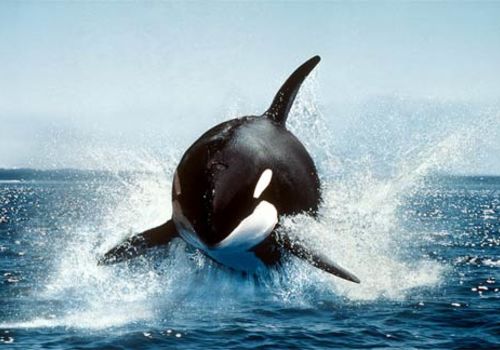
Killer whale
Orcinus orcaKiller whale
Introduction: The killer whale (Orcinus orca) belongs to the family Delphinidae (dolphin), making it the world's largest dolphin. It is not often seen but its size and striking black and white colouration make it one of the most exciting and easily identifiable sightings in the sea. The male has large, more prominent fins than the female and it is one of the most researched in the group of killer whales. Females can reach the age 90, and 4 generations of killer whale may travel together. They depend heavily on underwater sound for orientation, feeding, and communication in a variation of clicks, whistles, and pulsed calls.
There is more of an understanding and growing appreciation of the killer whale since the success of the 1993 film, Free Willy. The star of the film, Keiko was returned to the coast of his native Iceland after growing opposition to the practice of keeping wild whales in aquaria.
Distribution: The killer whale can be seen off the coast of Namibia, in shallow coastal waters, and although sightings are rare, they would be from the Uniab River mouth, between Torra Bay and Terrace Bay, southwards.
Diet: Seals, birds, ( penguins, cormorants and gulls), turtles, dolphins and fish such as sharks
Colouring: Dark upper parts on a rounded body, with a white belly and white patches on each side of the head. There is a grey, saddle-like feature on the side.
Breeding: Killer whales have a 15 month gestation period every 3 to 10 years. A single calf is born, with an average of 5 per 25 year reproductive lifespan per female.
Size: 9m for the male, 8m for the female. Weight averages around 8t for the male and 4t for the female. The dorsal fin can be up to 2m long.
Klein Windhoek

